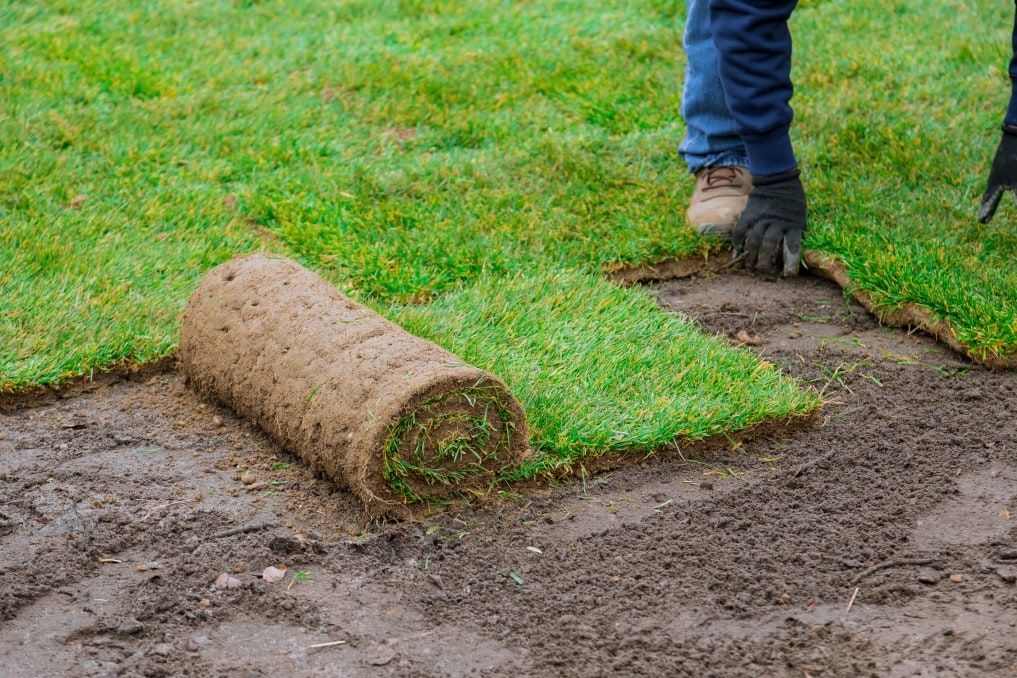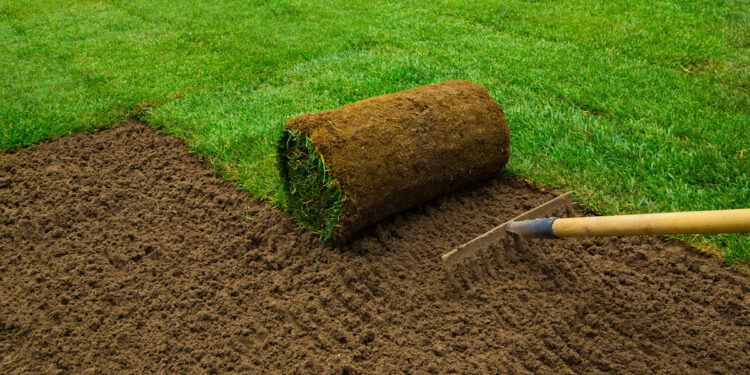If you’re in the market for grass that holds up well in warm, dry weather, zoysia is a viable option to consider. Heat and drought-tolerant, Zoysia is frequently used for golf course fairways. If it’s good enough for the course, it’s more than sufficient for a residential or commercial property.
Here are five steps to help you efferctively lay sod for zoysia grass, and how to maintain it once it’s planted.
Step 1: Prepare the Ground
Proper preparation is critical for growing and maintaining a healthy lawn. At least two weeks before you lay the sod, clear out all weeds using a non-selective weed killer. Keep in mind that laying sod immediately after using weed killer will more-than-likely hurt or kill the new grass.
Once weeds have been eradicated, till the soil to a depth of roughly six inches. This is important because it provide your Zoysia grass with room to spread out and grow. Once this is complete, adding natural amendments like compost, for example, can be beneficial in adding fertility to your soil.
Step 2: Lay the Sod
The ground upon which you’re planning to lay your sod should be smoothed by a lawn roller, and low spots should be filled with extra soil. When laying the sod, begin with the longest, straightest edge, and lay the pieces end-to-end. Be careful not to leave any gaps. It’s best to stagger pieces so that the seams are not perfectly lined up.
Once the sod has been laid, most lawn care experts recommend repeating the rolling process in order to tamp down the sod and secure it in place.

Step 4: Water the Grass
Even those with a very limited knowledge of how to care for Zoysia grass could probably have guessed that it will need to be watered. The key is to water your grass immediately after you lay the sod. This is because water is needed to create a “bond” between the soil and your new grass.
Be careful not to over-water, as you don’t want your sod to be “floating” on top of the soil. If you’re looking for a specific number, most experts recommend watering your grass a quarter-inch two times per day until the roots take hold. Once everything is in place, watering once-daily should be sufficient in most locations.
Step 5: Know How Much (and when) to Water
It should be noted that your maintenance plan will largely depend upon factors like soil fertility, rainfall, whether or not the grass is in a sunny or shady area, and the general geographical location (north or south).
In a Midwestern climate, Zoysia grass will most likely turn brown toward in late autumn and remain brown until springtime. If you live in a southern climate that stays warm all year long, you should expect Zoysia grass to maintain its green color throughout the year.
One of the reason this grass has become so popular is because it doesn’t need a huge amount of water to stay green during the summer. It grows slower than other species, so less mowing is needed as well. Talk about a win-win!
Step 6: Aeration and Fertilization
While Zoysia isn’t necessarily high-maintenance, there is some work that needs to be done. Because Zoysia often has a lot of thatch, it needs to be aerated more than some other grasses. Additionally, it’s recommended that you fertilize each spring and summer. Typically 15 lbs. of fertilizer for every 1,000 sq. ft. is a good guideline to use.
If you want to keep your grass looking and performing its best, applying 2 to 3 lbs. of nitrogen as a supplemental feeding during growing season can have major benefits. If weeds are beginning to show, apply Zoysia grass weed killer to the lawn. Make sure to apply plenty of water to the lawn after applying any herbicides to a Zoysia grass lawn. Just be sure to perform these treatments roughly 2 months apart.
Step 7: Enjoy Your New Grass!
Zoysia is a fantastic choice for high traffic areas, and it creates a thick, beautiful green carpet under foot during warmer seasons. For those who are looking to find a solution for a golf or baseball facility, you can’t go wrong with this choice.
Be sure to research the specific recommendations for your climate in order to develop a maintenance plan that’s perfect for your region’s conditions.






